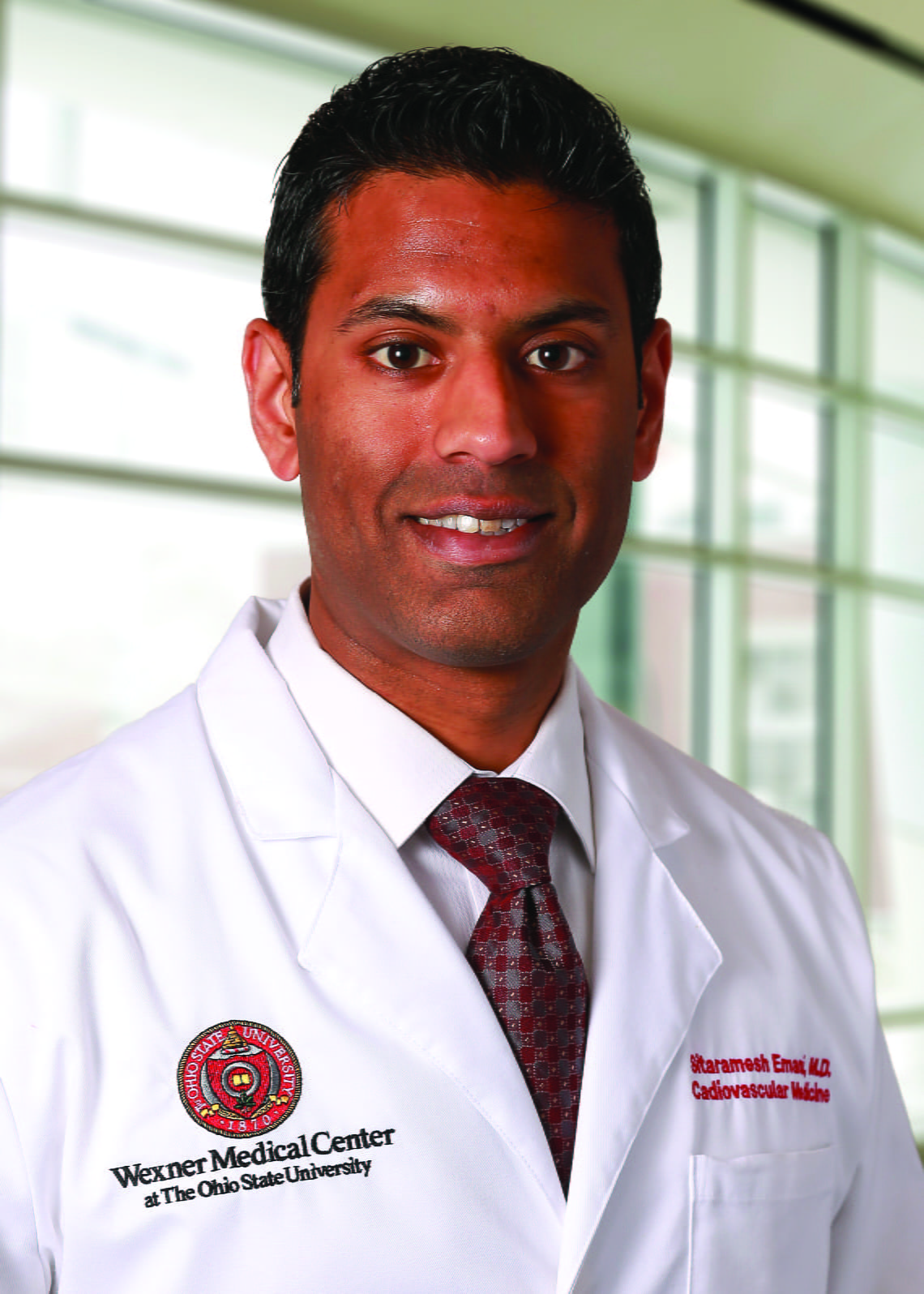March 2, 2017
COLUMBUS, Ohio – A Whitehall, Ohio man is the first in the U.S. to undergo a brand new treatment designed to remove excess fluid from hospitalized patients suffering from congestive heart failure, which affects six million Americans. The trial procedure occurred last week at The Ohio State University Richard M. Ross Heart Hospital.
Ohio State cardiovascular researchers are testing the safety and feasibility of inserting a special catheter to improve the flow of fluid from the lymphatic system. Lymphatic vessels help remove fluid from tissues and return it to the body’s circulatory system. Excess fluid is then eliminated by the kidneys. The lymphatic system typically drains up to two gallons of fluid per day. In acute congestive heart failure, this process is impeded, allowing fluid build-up, or edema, to occur in the lungs and other areas of the body. Edema is a major symptom in heart failure, and this novel therapy aims to treat one of the underlying causes.
Ohio State is first to conduct the procedure and is one of only two test sites in the U.S., along with Edwards Hospital in Chicago.
 “Most of the recent advancements in heart failure have been for non-hospitalized patients, to help keep them well,” said Dr. Sitaramesh Emani, a cardiologist and director of heart failure clinical research at Ohio State, who performed the procedure. “We need new therapies for patients once they’ve become hospitalized. There hasn’t been a lot of new development there.”
“Most of the recent advancements in heart failure have been for non-hospitalized patients, to help keep them well,” said Dr. Sitaramesh Emani, a cardiologist and director of heart failure clinical research at Ohio State, who performed the procedure. “We need new therapies for patients once they’ve become hospitalized. There hasn’t been a lot of new development there.”Raynes Rozzelle, 61, has lived with various heart issues most of his life – from a heart murmur, to an irregular heartbeat, and then a heart attack four years ago. He’s been in and out of the hospital with congestive heart failure for about a year. He says he readily agreed to try something new.
“I thought, not only could this possibly help me, it may end up helping a lot of other people. I was raised to help others whenever you can,” Rozzelle said.
The treatment, developed by WhiteSwell Medical, is the first known catheter specifically designed to target the lymphatic system internally. The device is placed in the neck under ultrasound guidance in the catheterization lab, and the treatment continues at the bedside using a machine that helps circulate some of the blood.
Currently, in-hospital treatment for congestive heart failure involves removing excess fluid with diuretic medication and/or ultrafiltration, in which a machine bypasses the kidneys and filters water and salt from the body. However, the treatments can have unwanted side effects such as low blood pressure and worsening kidney function.
 “In some cases, the diuretics provide only partial relief, so there’s a need for new options for treating the congestion associated with heart failure,” said Dr. Garrie Haas, lead investigator on the study and director of the Ohio State advanced heart failure program. “More efficient and effective treatment not only improves the patient’s quality of life, it can reduce re-hospitalizations, so we’re interested in trying this new approach.”
“In some cases, the diuretics provide only partial relief, so there’s a need for new options for treating the congestion associated with heart failure,” said Dr. Garrie Haas, lead investigator on the study and director of the Ohio State advanced heart failure program. “More efficient and effective treatment not only improves the patient’s quality of life, it can reduce re-hospitalizations, so we’re interested in trying this new approach.”According to the Centers for Disease Control, heart failure is the most common reason for hospital admission in those ages 65 and older, and it accounts for one million admissions each year in the U.S.
###
Media Contact: Marti Leitch, Wexner Medical Center Media Relations, 614-293-3737 or Marti.Leitch@osumc.edu
